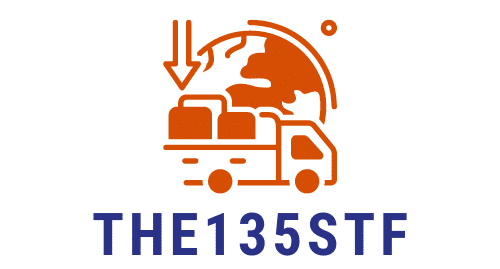Anxiety disorders and panic attacks are a common mental health concern, affecting a significant portion of the population. According to a recent health study, approximately one in five adults in the United States is diagnosed with an anxiety disorder. Mindful breathing, a form of mindfulness therapy, is gaining traction as a potential treatment for these conditions. This article explores whether mindful breathing techniques can indeed help alleviate panic attacks.
Exploring the Link Between Breathing and Anxiety
Before delving into the potential of mindful breathing techniques, it’s important to understand the relationship between breathing and anxiety. Stress often manifests as physical symptoms, including rapid heart rate, sweating, and notably, changes in breathing patterns. When you’re anxious, your breathing can become quick and shallow, often leading to hyperventilation. This can exacerbate feelings of panic, creating a vicious cycle.
A découvrir également : Can Introducing Allergens During Infancy Reduce the Risk of Allergies?
This section will discuss the details of this relationship and how it forms the basis for the mindful breathing approach in treating panic disorders. By developing an understanding of these mechanisms, you will be better equipped to comprehend the potential benefits of mindful breathing techniques.
Understanding Mindful Breathing
Mindful breathing is a form of mindfulness therapy that involves focusing on your breath, the sensation of air entering and leaving your lungs, and the rhythm of inhalation and exhalation. It’s a simple yet profound practice that helps ground your attention in the present moment, away from anxieties about the future or ruminations about the past.
A découvrir également : Does Exposure to Classical Music Affect Neonatal Health and Development?
This section will delve into the science of mindful breathing, its origins, and how it is practiced. By the end of it, you should have a comprehensive understanding of this therapy and be able to apply it in your daily life to manage moments of stress and panic.
Mindful Breathing as a Treatment for Panic Disorders
Research suggests that mindful breathing can be an effective treatment for panic disorders. A study conducted in 2019 shown on doi and crossref involved participants with anxiety disorders. They were divided into groups, with one group receiving mindfulness training, including mindful breathing techniques. The other group received conventional treatment. The group practicing mindfulness reported a significant reduction in anxiety symptoms compared to the control group.
This section will dig deeper into the research findings, shedding light on how mindful breathing can help in treatment of panic disorders. It will detail key studies, their methodologies, and results, offering a comprehensive view of the current scientific understanding.
Incorporating Mindful Breathing in Daily Life
Mindful breathing is not only useful in therapeutic settings but can also be incorporated into everyday life for managing stress and anxiety. Whether one is dealing with the pressures of work, academia, or personal life, mindful breathing can provide a moment of calm and focus amidst the chaos.
In this section, you’ll find practical ways to incorporate mindful breathing into your daily routine. From simple exercises that can be done anywhere, anytime, to more structured practices that require a quiet space and dedicated time, these techniques can be tailored to suit your lifestyle and needs.
Limitations and Cautionary Notes
While mindful breathing has shown promise in alleviating anxiety and panic symptoms, it should be noted that it is not a standalone treatment for severe and chronic cases. It is best used in conjunction with other treatments under the guidance of a healthcare professional.
This section will discuss the limitations of mindful breathing as a treatment option and provide important cautionary notes for anyone considering it as their primary mode of therapy. It’s crucial to remember that while these techniques can be beneficial, they should not replace professional medical advice and treatment.
By exploring the science of breathing and its impact on anxiety, understanding the practice of mindful breathing, investigating research on its effectiveness, and learning how to incorporate it into your life, you will have an in-depth understanding of this potential remedy for panic attacks.
Mindful Breathing as a Treatment for Panic Disorders
There’s promising evidence supporting the use of mindful breathing as an effective strategy in managing panic disorders. A noteworthy study, published on crossref and doi in 2019, involved participants diagnosed with anxiety disorders. The researchers divided the participants into two distinct groups. The first group received mindfulness training, including mindful breathing exercises, while the second group was treated with conventional methods.
The results of the study were quite enlightening. The group involved in the mindfulness training reported a significant decrease in symptoms of anxiety compared to the group receiving traditional treatment. The mindfulness group observed they were better equipped to cope with panic attacks, experienced reduced anxiety, and generally felt more at ease.
Further research from pubmed crossref and google scholar aligns with these findings, demonstrating that mindful breathing can indeed help manage panic attacks. These studies involve various controlled experiments with different methodologies, but the unanimous conclusion points towards the effectiveness of mindful breathing in reducing anxiety and stress symptoms.
However, mindful breathing is not a one-stop solution for all. Its effectiveness varies from person to person and depends on factors like the severity of the disorder, the individual’s willingness to practice regularly, and their receptivity to the concept of mindfulness.
Incorporating Mindful Breathing in Daily Life
The beauty of mindful breathing is its feasibility. You can incorporate it into your daily routine, whether at home, at work, or during moments of acute stress. The goal is to create a space of serenity amidst the chaos.
To incorporate mindful breathing into your everyday life, start by setting aside a few minutes daily. Find a quiet space, close your eyes, and slowly focus on your breath. Pay attention to the sensation of air entering and leaving your lungs, the rhythm of your heartbeat, and try to maintain a stable breathing pattern. This simple technique, known as diaphragmatic breathing, can help restore calm and focus.
For those dealing with high-stress environments, try taking short mindful breathing breaks throughout the day. Even just a few minutes can help reset your stress levels and provide a much-needed calm amidst a storm.
Limitations and Cautionary Notes
While the evidence supporting mindful breathing as a treatment for panic disorders is compelling, it’s essential to note that it is not a standalone solution for severe or chronic cases of anxiety disorders. It is better used as an adjunct to other treatments, under the supervision of a qualified healthcare professional.
Some individuals might find it challenging to focus on their breath during episodes of panic or anxiety. For them, it may be best to seek professional help and discuss the possibility of incorporating mindful breathing into an overall treatment plan. Moreover, if you’re already receiving medical treatment for an anxiety disorder, never replace it with mindful breathing without consulting your healthcare provider.
In conclusion, mindful breathing is a valuable tool in managing panic attacks and anxiety. However, it must be applied responsibly, and is most effective when used in conjunction with other therapeutic methods, under professional guidance. So, while it’s worth exploring mindful breathing as part of your mental health toolkit, keep in mind that it’s not a magic bullet – it’s one piece of the puzzle in addressing anxiety disorders and panic attacks.






